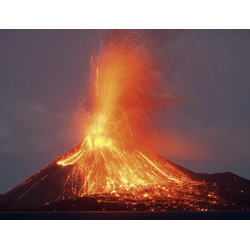- Student test on volcanoes
- Teacher notes and answers for this test
- Buy using PayID 47065111373 OR
- Your files will be emailed to you
- Download the App by pointing your camera at the QR code

Parent and Teacher Notes
This experiment explains how volcanoes form on the convergent boundaries of tectonic plates. When certain tectonic plates on the earth’s surface meet, one is pushed under the other. The heavier oceanic crust is pushed under the lighter continental crust, forming mountains along its edge. Magma, which is molten rock that is less dense than the surrounding crust, rises and forms a chamber inside the mountain. Over time, pressure builds up in the magma within the mountain until it explodes in a volcanic eruption.
Scientific concepts covered:
Tectonic Plates: The outermost layer of our planet Earth is called the Earth’s crust – it’s what we are standing on, and holds up the ocean, too. The crust is broken into puzzle pieces called tectonic plates.
Convergent Boundary: A convergent boundary is where two tectonic plates push together. Sometimes, one plate will be pushed under the other, such as when a heavier oceanic crust and a lighter continental crust meet. This can form mountain ranges and volcanoes on the edge of where one crust meets the other.
Mantle: The mantle is the largest layer in our planet Earth. The outermost part of it is made of very hot rock, including molten rock (magma).
Convection Currents: These currents are movement inside the Earth’s mantle due to the heat within. They cause the earth’s crust and tectonic plates to move very slowly over time, making plates push together or drift apart.
Production Notes
Image displayed for illustrative purposes only. if you are the copyright owner, please contact us.
AR19 - How do volcanoes form?
- Brand: Kilbaha Education
- Product Code: How do volcanoes form?
- Availability: In Stock
-
$10.00
Tags: Augmented Reality (AR)
